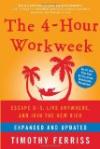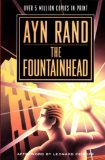Olivier Langlois's blog
06/09/07
Chaos
If you want to know more about strange attractors and the Feigenbaum diagram, this is the book for you.
Clifford A. Pickover books
These are the books I used to learn how to create the fractal images I show in this website. I highly recommend these books as the author writing style is superb. You can read these books almost as if they were novels. In fact, if you read these books, you might even start to be a Clifford A. Pickover fan as I did! This author has written an amazing number books. One can wonder how he finds so much inspiration. You should check the list of books written by Clifford A. Pickover!
Michael Abrash's Graphics programming Black book
This book is a monster brick of over 1300 pages with 70 chapters! Do not be misled by the book title because the 22 first chapters, which represents about the third of the 1300 pages, discuss assembly optimization. This book is getting a little bit old and a little bit outdated. For instance, this author covers optimization techniques for processors ranging from the 8088 to the Pentium and the Inner loops book covers the 486 to the Pentium Pro.
The second part covers low level graphics programming in assembly. The type of graphics programming that people were doing before Windows and DirectX.
Because assembly programming is not very popular anymore, for most people, it is not a good book to get but if assembly optimization is your thing, then you should consider this one as even if there are more recent books on x86 assembly programming, this one is the best that I have seen to lay out the basic concepts such as branch prediction, register contention, how to shuffle assembly instructions to optimize the processor pipelines usage and how to optimize the flag register usage. Armed with this knowledge in the back of your head, even when you write C or C++, you will be able to subtly change the way you formulate if/else blocks and for/while loops that will enhance your program performance without affecting the code readability.
06/05/07
Inner Loops: A sourcebook for fast 32-bit software development
It has historical value more than anything else...
This book is divided in 2. The first part describes the theory of assembler optimization for processors from the 486 to the Pentium Pro. 10 years ago, this information was useful but now it is pretty much deprecated as I highly doubt that Pentium optimization techniques do anything good on Athlons or Pentium IV processors. The only chapter that still contains applicable information today is the one providing general advices on optimization such as loop unrolling.
Then the second part named 'Practice' provides concrete examples of assembly optimizations for various problems such as sorting, list and tree traversals. I do not like this section neither because I feel that the presented assembly procedures are thrown at you in the face without showing you the process that the author used to derive them from the original C code. Michael Abrash's Graphics Programming Black Book does a much better job in that area by presenting you 5 versions or more of the same procedure starting from the C version that gets optimized further at each iteration. Also, someone might expect to be able to get the source from the CD-ROM coming with the book and start directly using it. Alas, it is not possible because what the presented code is sorting or searching in binary trees are integers that are directly manipulated in the registers (that is part of the presented optimizations) which has not much reuse value in a world of STL containers holding usually much more complex objects or structures than plain integers. The only value that these examples might have is that they might give you some ideas on where assembly optimization might be applied.
A much better book to learn the process of optimizing in assembly is Michael Abrash's Graphics Programming Black Book because it walks you through the optimization process step by step with more than 5 versions of the same procedure that is getting more optimized at each iteration. You will learn how to do it yourself with this book even if it suffers of the same weakness than this book. That is: it presents optimization techniques from the 8088 (that is very very old up!!!) to the Pentium Pro. Another benefit from Abrash book is that, in my opinion, there is a greater chance that you might find its code reusable.
Finally, a very good optimization book that covers optimization techniques for recent processors such as the Athlon and the Pentium IV is: Code Optimization: Effective Memory Usage.
06/02/07
Code Optimization: Effective Memory Usage
This book has been a revelation to me. Prior to read this book, all I knew was that memory access was expensive. This book will teach you how to organize your data in memory and how to access it to improve your program performance and most of the time without having to use assembly programming. It covers x86 memory organization and the interface between the processor and the memory and there is a whole chapter covering x86 processor cache memory. To me, the most shocking information contained in this book is a C implementation of memcpy() that outbeats VC++ implementation by 25%-30%!!!
This book is not for novices but if you are ready to change your perception forever of the x86 programming, this book is highly recommended!
Olivier Langlois's blog
I want you to find in this blog informations about C++ programming that I had a hard time to find in the first place on the web.
| Sun | Mon | Tue | Wed | Thu | Fri | Sat |
|---|---|---|---|---|---|---|
| << < | > >> | |||||
| 1 | 2 | 3 | 4 | 5 | 6 | |
| 7 | 8 | 9 | 10 | 11 | 12 | 13 |
| 14 | 15 | 16 | 17 | 18 | 19 | 20 |
| 21 | 22 | 23 | 24 | 25 | 26 | 27 |
| 28 | 29 | 30 | 31 | |||
Search

Categories
Olivier Langlois's blog
- AAC (2)
- Book reviews (12)
- C++ (24)
- Code Optimization (4)
- Compiler (3)
- Fractal (2)
- Linux/UNIX (3)
- Multithreading (3)
- Software security (7)
- TCP/IP (8)
- Web (1)
- Windows programming (19)
- C++ (28)
- tutorials (4)
- General (10)
- Hardware reviews (2)
- Linux (12)
- Recommended books (4)
- C++ (20)
- Code Optimization (2)
- Compiler (3)
- Fractal (2)
- Linux/UNIX (1)
- Multithreading (2)
- Rare out of print (3)
- Software security (5)
- TCP/IP (7)
- Windows programming (16)
- Software reviews (0)
- TCP/IP (8)
- Video games (4)
Archives
- January 2016 (1)
- September 2015 (1)
- July 2015 (1)
- June 2015 (1)
- May 2015 (1)
- December 2013 (3)
- September 2013 (1)
- May 2013 (8)
- April 2013 (1)
- December 2010 (1)
- August 2010 (1)
- June 2010 (1)
- More...
Misc
 XML Feeds
XML Feeds
What is RSS?
Who's Online?
- Guest Users: 4
 BOOKS i'm reading
BOOKS i'm reading









